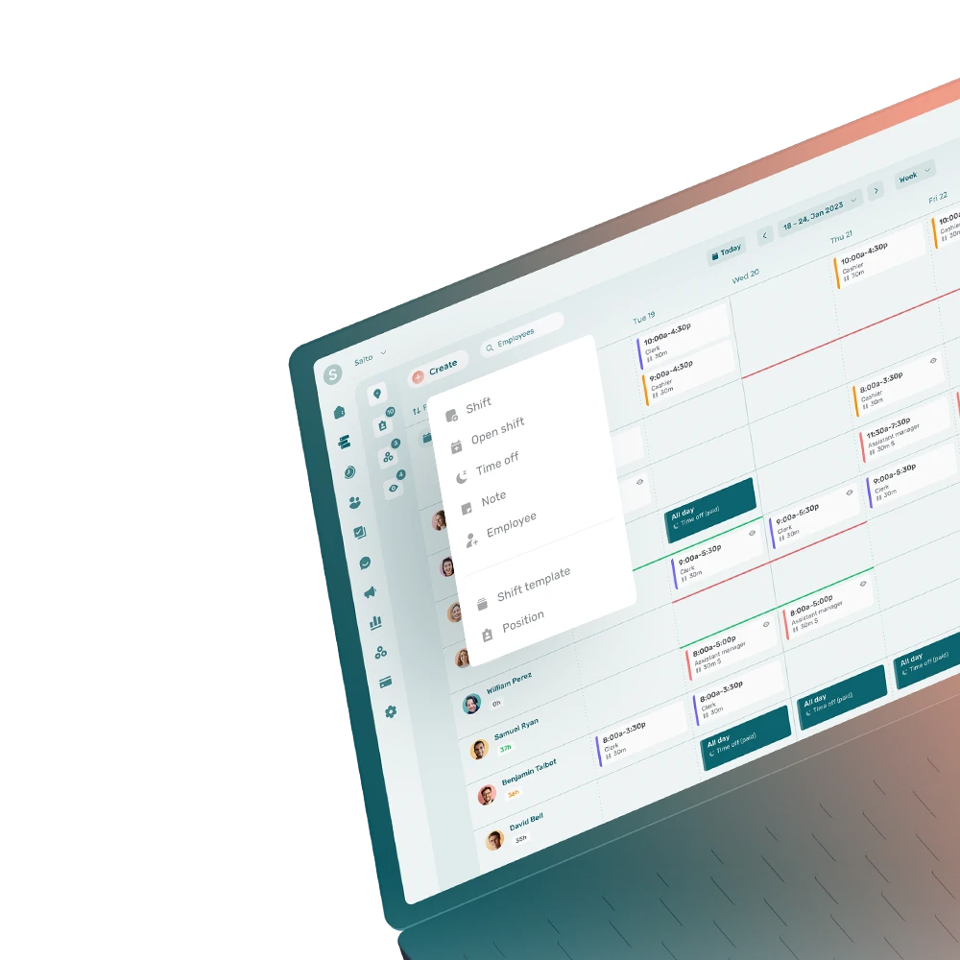Workforce management (WFM) refers to a broad range of activities aiming to optimize employee productivity within an organization. It regroups management processes such as forecasting and budgeting, time and attendance tracking, and staff scheduling.
What Is a Workforce Management System?
Workforce management systems are tools that handle many processes relating to employee productivity. Typically, a workforce management system refers to a local computer program or application or a cloud-based solution sometimes embedded in a broader HR management system. Such systems aim to facilitate data gathering and analyzing to make predictions about workload and human resources needs.
Workforce management systems are commonly used to:
- Streamline payroll processes;
- Reduce labor cost;
- Increase employee productivity;
- Save time through automation.
What Are the Benefits of Having a Workforce Management System?
Common benefits of having a workforce management system include:
- Reducing management errors;
- Improving employee satisfaction;
- Saving time;
- Enhancing customer experience;
- Improving productivity;
- Ensuring compliance with labor regulations.
Why Is Workforce Management Important?
Proper workforce management helps ensure the right employees are performing the right task at the right moment and that they are qualified to handle the inquiries of customers. Workforce management methods ultimately aim to maximize resources while reducing labor costs and without negatively impacting the experience of the customer.




